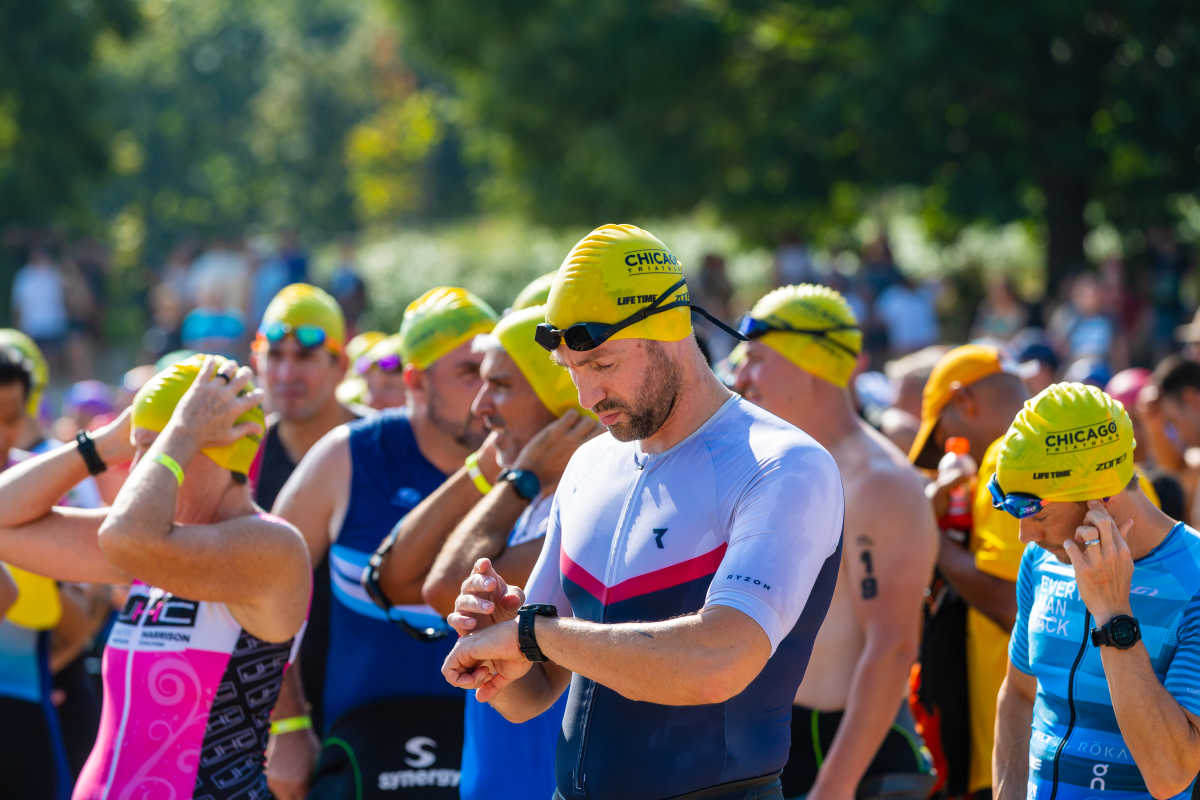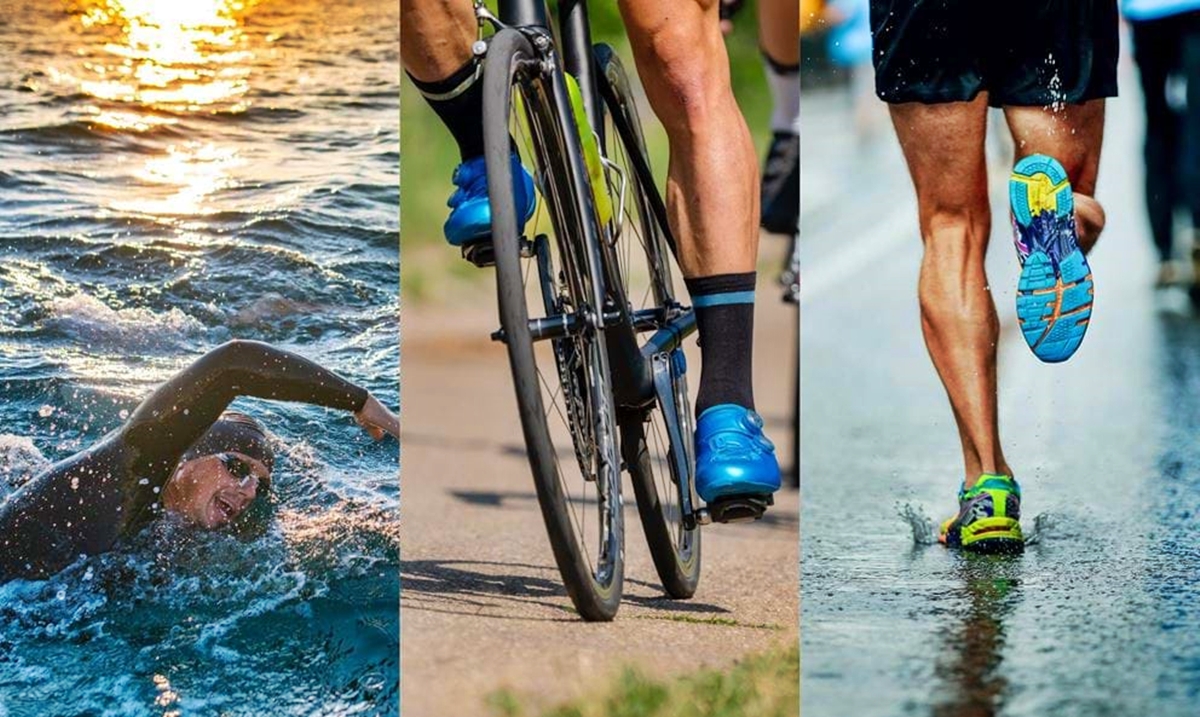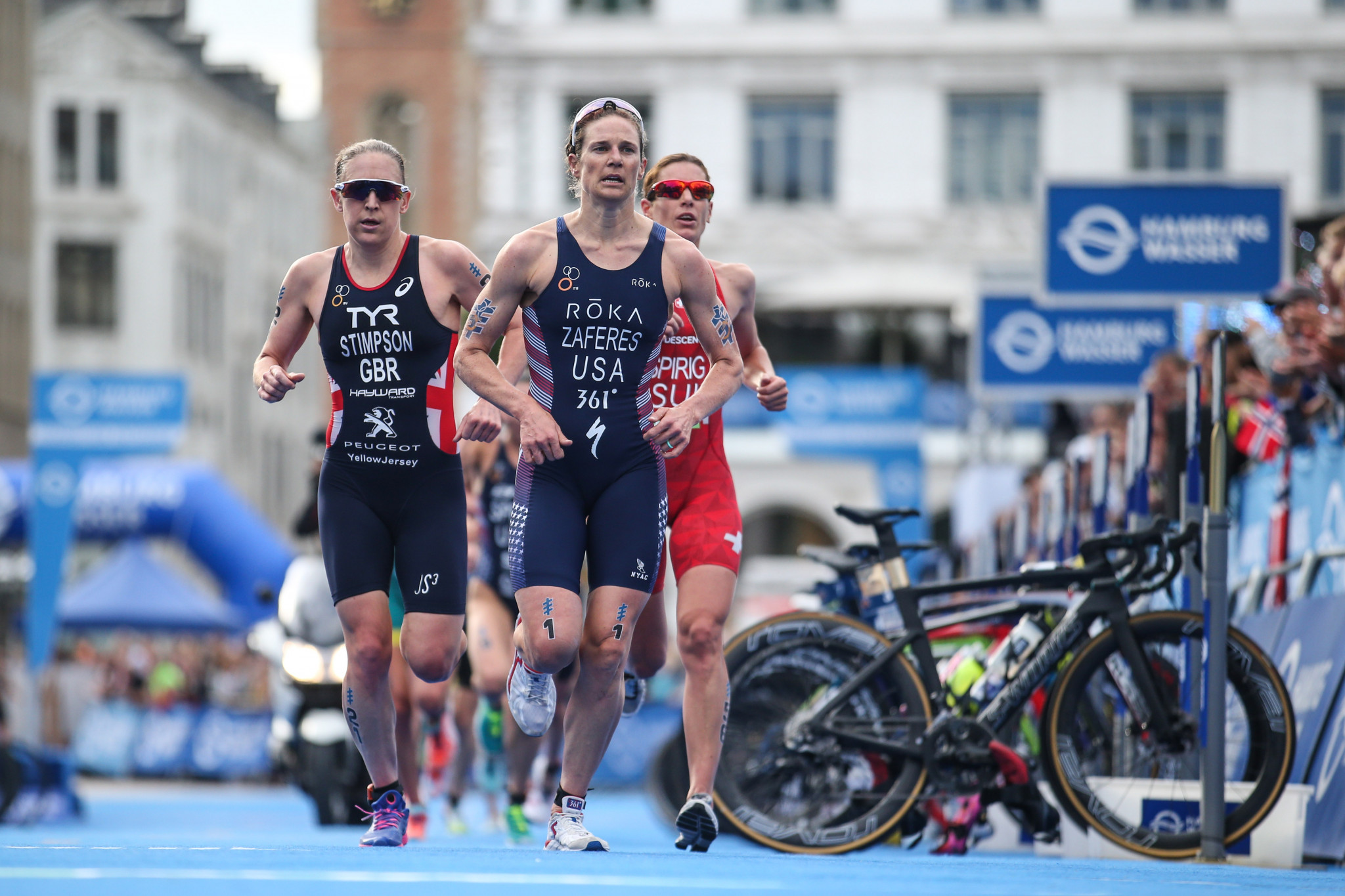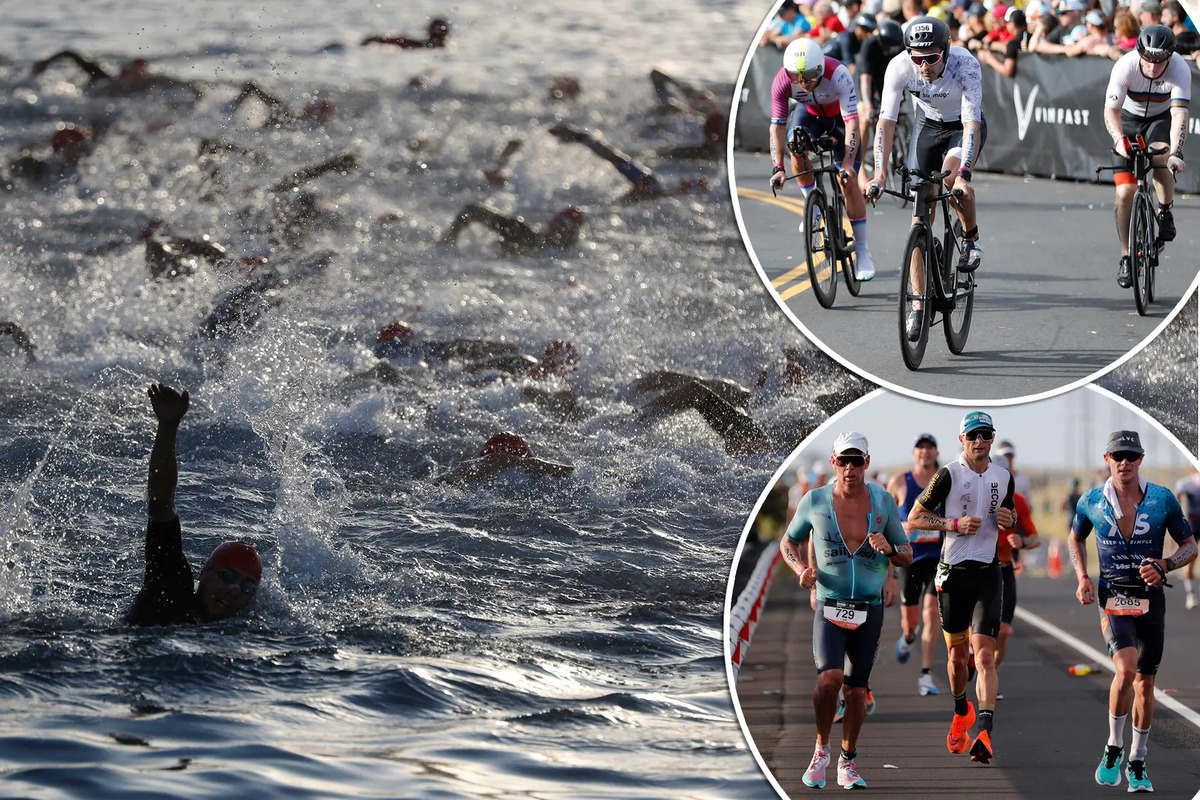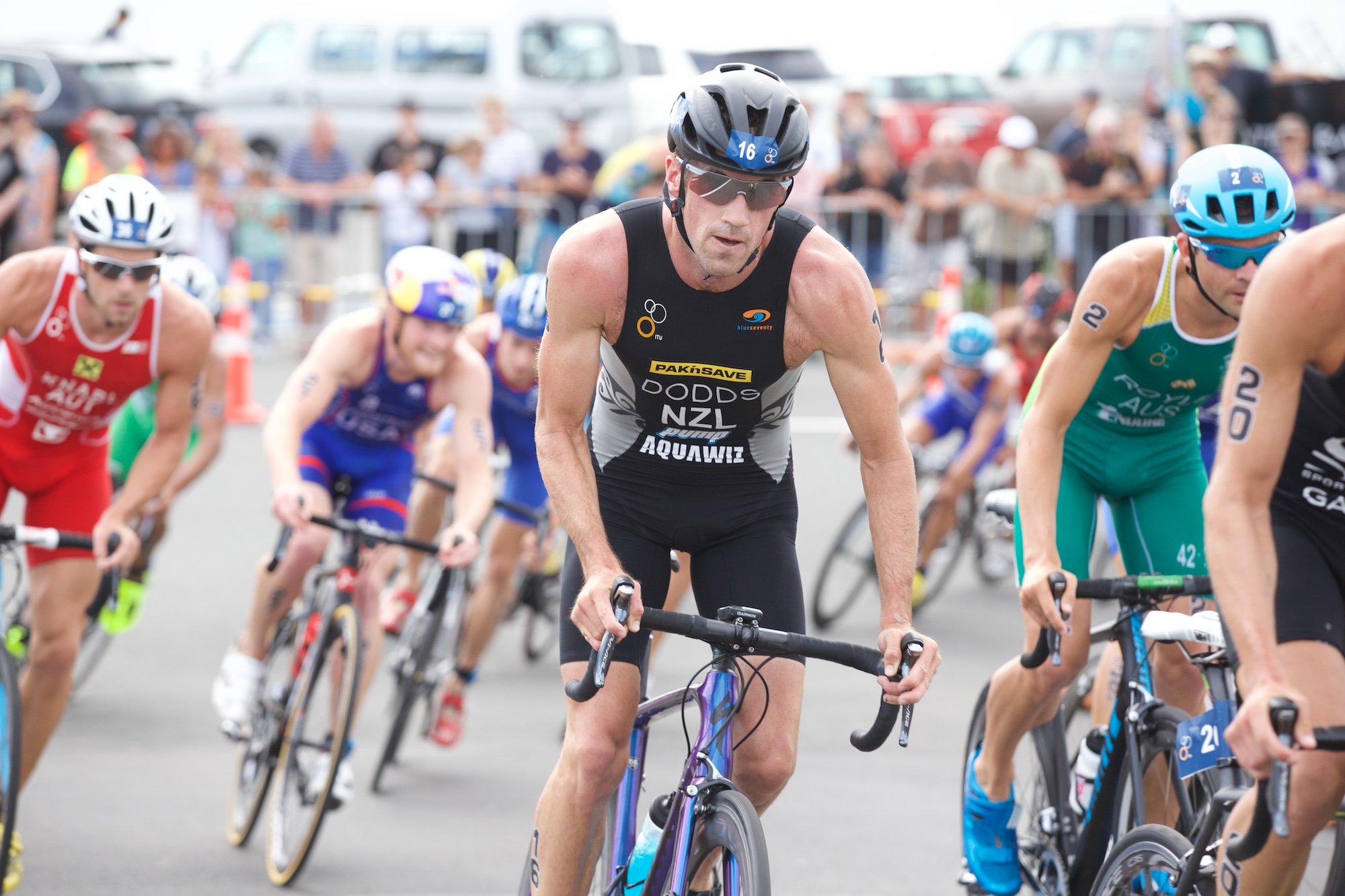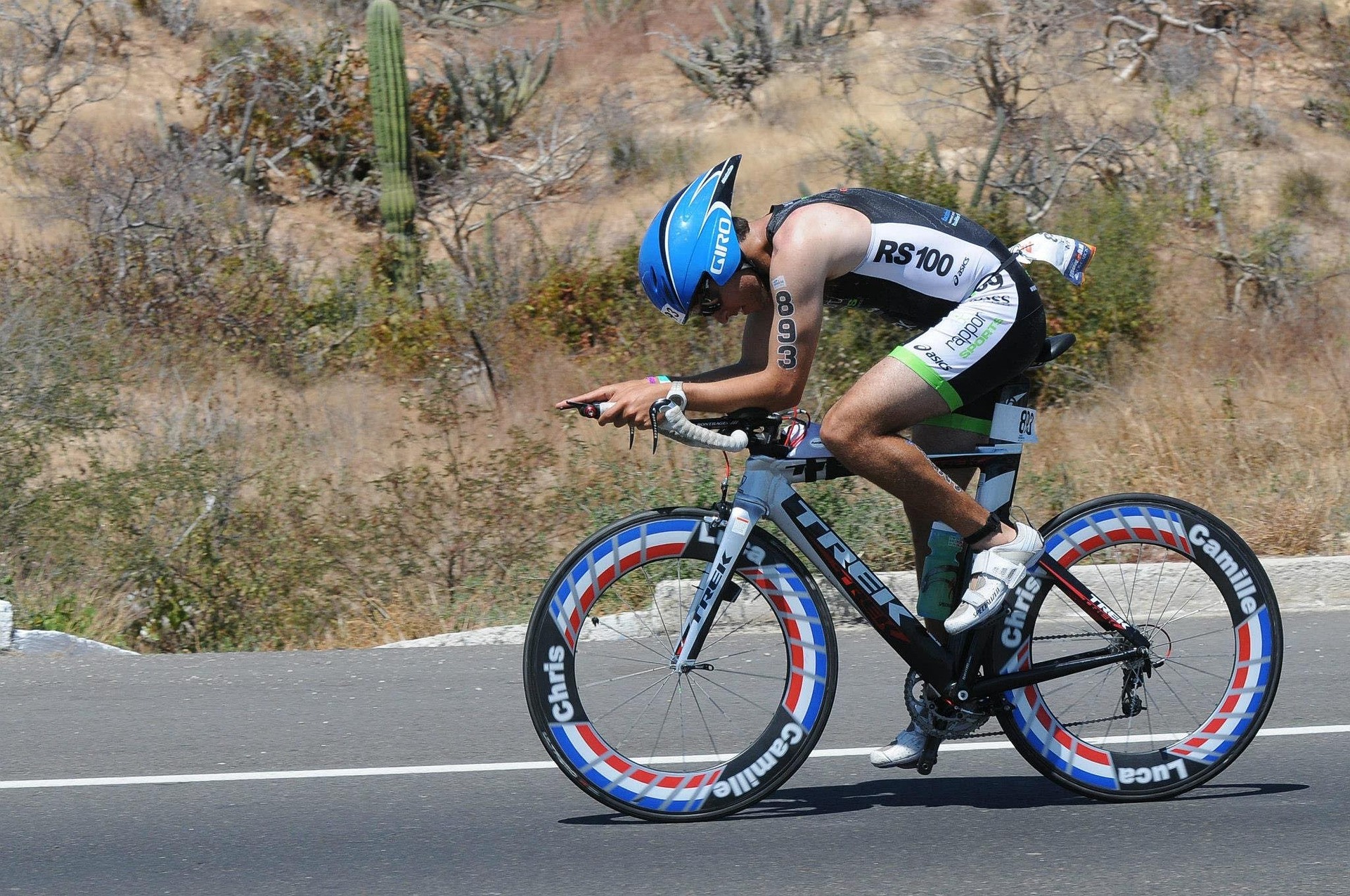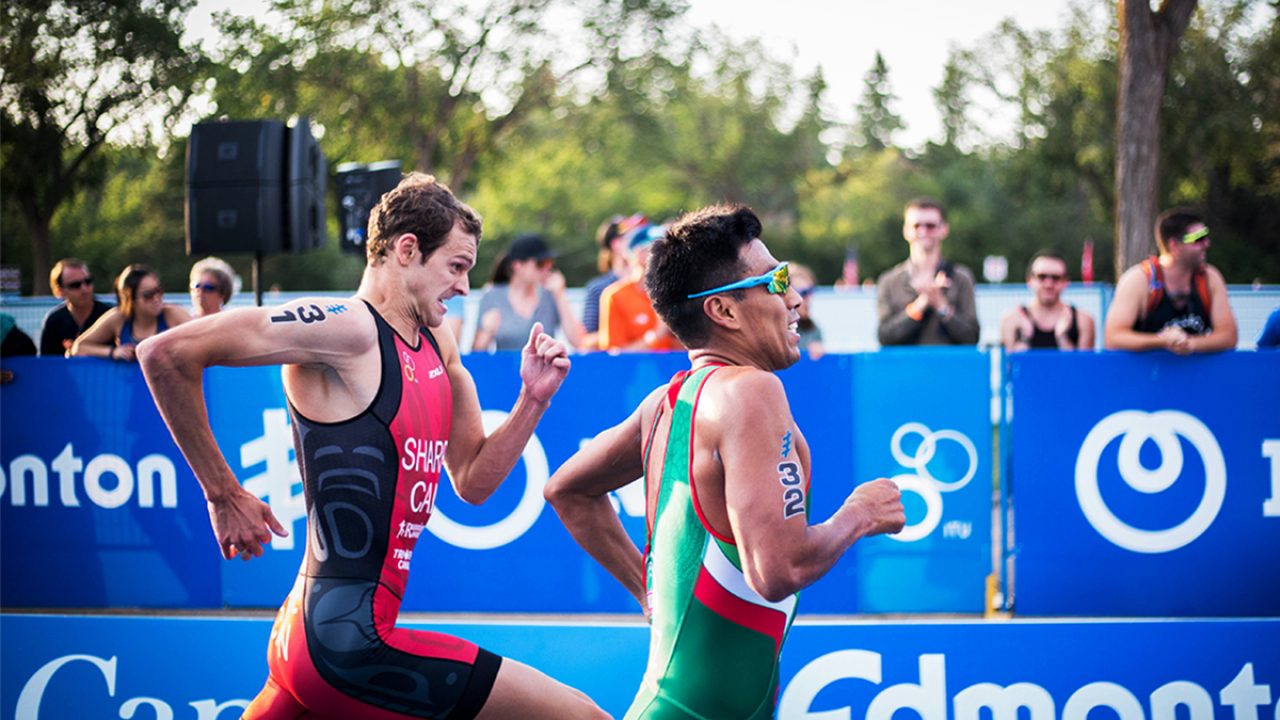

Featured
How Does Triathlon Work
Modified: August 21, 2023
Discover how triathlon works and get featured in our comprehensive guide. Learn about the swim, bike, run disciplines and master the art of juggling them all to cross the finish line
Introduction
Welcome to the world of triathlon! If you’re curious about how this multi-sport event works, you’ve come to the right place. Whether you’re a beginner looking to understand the basics or a seasoned athlete in search of a refresher, this article will guide you through the ins and outs of triathlon.
A triathlon is a demanding and exhilarating athletic competition that combines three separate disciplines: swimming, cycling, and running. It’s a test of endurance, speed, and mental fortitude, attracting athletes from all walks of life. From amateurs to professionals, people participate in triathlons for personal accomplishment, fitness, and the chance to challenge their limits.
Triathlons vary in distance, with the most common being the Sprint, Olympic, Half Ironman, and Ironman distances. Each distance offers its own set of challenges, requiring different levels of training and preparation. The distances can range from as short as a 750-meter swim, 20-kilometer cycle, and 5-kilometer run in a Sprint triathlon to a grueling 3.8-kilometer swim, 180-kilometer cycle, and 42.2-kilometer run in an Ironman triathlon.
Every triathlon begins with the swim segment. Athletes dive into the open water or enter a pool, depending on the race, and swim a designated distance. After completing the swim, they transition to the bike segment, where they ride a specified route on a road bike or a time trial bike. The final segment is the run, where athletes demonstrate their endurance by completing a designated run course. Transition areas between each segment allow athletes to change gear and prepare for the next leg of the race.
Triathlon races come in various formats, including individual, relay, and team events. In an individual race, athletes participate alone and complete all three segments on their own. In relay races, a team of three members divides the swim, bike, and run segments amongst themselves. Team events allow multiple team members to compete together, with each member completing one or more segments of the race.
Scoring and timing in triathlon are generally based on the overall time taken to complete the entire race. Participants aim to finish with the fastest time possible, earning rankings based on their performance. Timing chips or transponders are used to accurately track each participant’s time throughout the race.
Training for a triathlon requires a well-rounded approach that includes swim, bike, and run workouts, as well as strength training and flexibility exercises. It’s essential to gradually build endurance, improve technique, and train in all three disciplines to prepare for the challenges of the race. Proper nutrition, hydration, and recovery strategies are also crucial for optimal performance.
Now that you have a brief overview of the sport, you’re ready to dive deeper into each discipline, the transition areas, race formats, scoring and timing, and training methods. So, let’s jump in and explore the fascinating world of triathlon!
What is a Triathlon?
A triathlon is a multi-sport endurance event that combines three different disciplines: swimming, cycling, and running. It’s a unique and challenging sport that pushes athletes to their limits both physically and mentally. Triathlons can vary in distance, with the most common being the Sprint, Olympic, Half Ironman, and Ironman distances.
At its core, a triathlon is a race against the clock. Participants aim to complete the entire course in the shortest amount of time possible. The order of the disciplines is always the same, starting with the swim, followed by the bike segment, and finishing with the run.
The swim portion can take place in open water, such as lakes, rivers, or oceans, or in a pool. Athletes must navigate through the designated course while battling the elements and other participants. Depending on the distance, swimmers may need to cover anywhere from a few hundred meters up to several kilometers.
Following the swim, participants transition to the bike segment. They hop on their bicycles and navigate through a predetermined route. Cyclists may face different terrain and elevations, making this segment both physically demanding and strategically challenging. The length of the bike segment varies based on the distance of the triathlon, ranging from a few kilometers to over 180 kilometers in an Ironman event.
After completing the bike segment, athletes enter the final leg of the triathlon – the run. The running course can take place on roads, trails, or a combination of both. Endurance and mental strength play a crucial role in this segment, as participants must push through fatigue accumulated from the previous swim and bike legs. Run distances range from a few kilometers to a full marathon (42.2 kilometers) in an Ironman triathlon.
Transition areas, commonly known as T1 and T2, are crucial parts of the race. T1 is the transition between the swim and bike segments, where participants change from their swim gear into cycling clothes and quickly prepare for the next leg. T2 is the transition between the bike and run segments, where athletes switch from cycling attire to running gear.
Triathlons offer different race formats to accommodate varying preferences and abilities. Individual races are the most common, where participants complete all three segments on their own. Relay races involve a team of three members, each specializing in one discipline. Each team member completes their segment before tagging their teammate to continue the race. Team events allow a larger group to compete together, with each member completing one or more segments of the triathlon.
Scoring and timing in triathlons are primarily based on the overall time taken to complete the entire race. The goal is to finish with the fastest time possible to achieve a higher rank. Participants wear timing chips or transponders to track their progress and ensure accurate timing throughout the race.
Preparation for a triathlon involves a comprehensive training plan that includes swim, bike, and run workouts, as well as strength training, flexibility exercises, and proper nutrition. Training gradually increases in intensity and duration, allowing athletes to build endurance, improve technique, and enhance their overall performance.
Now that you have a better understanding of what a triathlon entails, let’s delve into the specifics of each discipline, explore the transition areas, race formats, and learn about training methods that can help you become a triathlete.
The Three Disciplines of Triathlon
Triathlon is a unique sport that combines three distinct disciplines: swimming, cycling, and running. Each discipline requires specific skills, training, and equipment. Let’s explore these three disciplines in more detail.
1. Swimming: The first discipline in a triathlon is swimming. Depending on the race, the swim segment can take place in open water or a pool. Open water swims often present additional challenges such as waves, currents, and limited visibility, requiring athletes to adapt their technique and navigate efficiently. In pool swims, athletes complete a specific number of laps based on the race distance.
Swimming is a full-body exercise that engages the muscles of the upper body, core, and lower body. Technique is crucial to conserve energy and maintain a steady pace throughout the swim. Freestyle (also known as front crawl) is the most common stroke used in triathlon, as it combines efficiency and speed. However, participants can also use other strokes such as breaststroke or backstroke if preferred.
2. Cycling: The second discipline in triathlon is cycling. Participants transition from the swim to the bike segment, during which they cover a specified distance on a road bike or a time trial bike. The cycling portion offers varying terrains, including flats, hills, and descents, which require different strategies and techniques.
The choice of bike depends on personal preference and the race distance. Road bikes are commonly used in shorter races due to their agility and versatility, while time trial bikes (also known as triathlon bikes) are designed for speed and aerodynamics, making them ideal for longer distances. Proper bike fit, handling skills, and pacing are essential for maximizing performance and conserving energy during the bike segment.
3. Running: The final discipline in a triathlon is running. After completing the bike segment, participants transition to the run course, where they cover a designated distance on foot. The run segment is often considered the most mentally challenging part of the race, as athletes must push through fatigue accumulated from the swim and bike legs.
Running in a triathlon requires endurance, strength, and efficient running form. Different terrains, such as roads, trails, or a combination of both, can be encountered during the run course. Pacing is vital to maintain a steady rhythm and avoid burning out too soon. Training includes building running endurance, improving speed through interval training, and practicing the transition from cycling to running to adapt to the change in muscle usage.
Each discipline in triathlon plays a vital role in overall performance. Some athletes may excel in one discipline more than others, making the sport exciting and unpredictable. Triathletes often focus on improving their weaker disciplines through targeted training and technique refinement to achieve a well-rounded performance.
Understanding the three disciplines of triathlon is crucial for planning training schedules and setting race goals. Whether you’re a beginner or a seasoned athlete, dedicating time and effort to each discipline will contribute to your success in mastering the challenges of triathlon.
Swim Segment
The swim segment is the first discipline in a triathlon and sets the tone for the rest of the race. It can take place in open water, such as lakes, rivers, or oceans, or in a pool, depending on the race. The swim distance can vary based on the triathlon distance, ranging from a few hundred meters to several kilometers.
Swimming in open water requires a different set of skills compared to pool swimming. Athletes must navigate through unpredictable conditions, including waves, currents, and limited visibility. It’s essential to adapt swimming techniques and develop strategies to overcome these challenges.
While freestyle (also known as front crawl) is the most common stroke used in triathlon, participants are allowed to use other strokes such as breaststroke or backstroke if preferred. The goal is to select a stroke that maximizes efficiency and conserves energy throughout the swim segment.
During training, it’s crucial to focus on improving swimming technique, which includes body position, breathing, arm and leg movement, and timing. Proper body alignment and a high elbow catch help to optimize propulsion and minimize drag in the water. Breathing rhythm and bilateral breathing (breathing on both sides) should be practiced to ensure efficient oxygen intake and swimming balance.
Open water swimming presents additional challenges that triathletes must prepare for. Sighting, the ability to locate and swim in the correct direction, is essential to avoid straying off-course. This can be achieved by using landmarks on land, buoys, or strategically placed sighting markers. Practice sighting techniques during training sessions to develop accuracy and efficiency.
Another aspect to consider in open water swims is drafting. Drafting involves swimming close behind or alongside another swimmer to take advantage of the reduced drag created by their presence. It conserves energy and allows athletes to swim at a faster pace with less effort. However, it’s important to maintain proper etiquette and not hinder or impede other competitors while drafting.
In pool swims, the number of laps required depends on the distance indicated by the race. Athletes should become familiar with pool swimming techniques and practice efficiently turning at the walls, also known as flip turns, to maintain a continuous swim momentum.
Regardless of the swim environment, practicing open water swims, pool sessions, and interval training can help improve endurance, speed, and confidence in the water. Regular swim workouts should be incorporated into training plans to build swim-specific fitness.
The swim-to-bike transition, known as T1, is an important part of the race. Athletes must quickly move from the water to the transition area, where they change into their cycling attire and prepare for the bike segment. Efficient T1 transitions can save valuable time and ensure a seamless flow from one discipline to the next.
The swim segment of a triathlon requires a combination of technical skill, physical fitness, and mental focus. Proper swim technique, navigation strategies, and open water experience are key to mastering this challenging discipline and setting a solid foundation for a successful triathlon performance.
Bike Segment
The bike segment is the second discipline in a triathlon and follows the swim segment. Participants transition from the water to their bicycles, embarking on a specified route that varies in distance depending on the triathlon distance.
The bike segment offers a unique set of challenges, combining physical strength, technical skills, and strategic decision-making. Athletes must navigate through different terrains, including flats, hills, and descents, while maintaining a steady pace and conserving energy for the remaining run segment.
Choosing the right bike for a triathlon depends on personal preference and the race distance. Road bikes are commonly used in shorter races, known for their agility and versatility. They are designed to provide a comfortable riding experience while allowing for efficient power transfer. Time trial bikes (also known as triathlon bikes) are specifically built for speed and aerodynamics, making them ideal for longer distances where saving energy is crucial.
Proper bike fit is essential for maximizing performance and avoiding discomfort or injuries. It ensures that the body is properly aligned, reducing strain on the muscles and joints. Bike fit adjustments may include seat height, handlebar position, and cleat placement for optimal pedaling efficiency.
Handling skills are also crucial in the bike segment, especially when navigating sharp turns, negotiating obstacles, or maneuvering through congested areas. Practicing cornering, braking, and shifting techniques can improve overall bike control and confidence.
Pacing and strategy play a vital role in the bike segment. Athletes must determine the appropriate effort level to maintain throughout the race, considering factors such as distance, terrain, wind conditions, and their own fitness level. Starting too fast can lead to early fatigue, while conserving energy too much may result in lost time. Monitoring heart rate, power output, or perceived exertion can help guide pacing decisions.
Hydration and nutrition are essential during the bike segment. Athletes should carry fluids and fuel on their bikes, consuming them at regular intervals to maintain optimal energy levels. Settling into a comfortable and aerodynamic position on the bike can also contribute to improving speed and conserving energy.
During training, it’s crucial to incorporate bike workouts that simulate race conditions. This includes interval training to improve speed, climbing sessions to enhance strength in tackling hills, and long endurance rides to build stamina for the race distance.
Transitioning from the bike to the run, known as T2, is a critical aspect of the race. Athletes must efficiently switch from cycling attire to running gear and mentally prepare for the upcoming leg of the race. Practicing quick and smooth T2 transitions can save valuable time and ensure a seamless transition to the final discipline.
The bike segment of a triathlon requires a combination of physical fitness, technical skill, and strategic decision-making. Proper bike fit, handling skills, pacing, and nutrition are all crucial elements for a successful bike performance in a triathlon.
Run Segment
The run segment is the final discipline in a triathlon, following the swim and bike segments. Participants transition from the bike to running, taking on a designated running course to complete the race. It is a test of endurance, mental strength, and running technique.
The run segment can take place on various terrains, including roads, trails, or a combination of both. The distance to cover depends on the triathlon’s race distance, ranging from a few kilometers in shorter events to a full marathon (42.2 kilometers) in an Ironman triathlon.
During the run segment, athletes rely on their endurance developed through training to push through fatigue accumulated from the previous swim and bike legs. Conserving energy and maintaining a steady pace are crucial for a strong run performance.
Proper running technique is vital to optimize efficiency and reduce the risk of injury. Focus on maintaining an upright posture, relaxed shoulders, and a forward lean from the ankles. Footstrike should be efficient and natural, whether it’s a heel strike, midfoot strike, or forefoot strike depending on personal biomechanics.
Pacing is essential during the run segment to avoid burning out too soon. The goal is to find a rhythm that can be maintained throughout the distance. Some athletes prefer to start conservatively and gradually increase their pace, while others prefer a more aggressive approach. It’s important to find a strategy that works best for individual capabilities and race goals.
Mental strength plays a significant role in the run segment of a triathlon. Fatigue and the physical demands of the race can take a toll, testing an athlete’s mental fortitude. Developing mental strategies, such as positive self-talk, focusing on small milestones, or visualizing the finish line, can help maintain motivation and push through challenging moments.
Gel stations and hydration stations are typically available along the run course in longer triathlon events. Athletes should take advantage of these stations to replenish their energy levels and stay properly hydrated. Practicing a fueling and hydration plan during training sessions is crucial to determine what works best for individual needs and preferences.
Training for the run segment should include a combination of endurance runs, speed work, and brick workouts. Incorporate long-distance runs to build stamina and mental resilience. Interval training, such as tempo runs and track workouts, can help improve speed and race-specific performance. Brick workouts, where you combine a bike ride with a short run, are particularly beneficial in preparing for the unique challenge of transitioning from cycling to running.
T2, the transition between the bike and run segments, requires efficient changes from cycling attire to running gear. Practicing quick and smooth transitions can save valuable time and ensure a seamless continuation from the bike to the run.
The run segment of a triathlon is both physically demanding and mentally challenging. Training for endurance, maintaining proper running technique, pacing strategically, and staying mentally focused throughout the run can lead to a strong finish and a successful triathlon performance.
Transition Areas
Transition areas, commonly known as T1 (transition one) and T2 (transition two), are essential elements of a triathlon. These areas serve as the transition zones where athletes switch from one discipline to the next.
T1 is the transition from the swim to the bike segment, while T2 is the transition from the bike to the run segment. Efficient transitions play a crucial role in a triathlete’s overall race time, as time spent in transition is added to the total race time.
During T1, athletes exit the water and move to the designated transition area. The first step is to remove their swim attire, such as wetsuits or swim caps, and put on their cycling gear. This includes putting on a helmet, cycling shoes, and any other necessary equipment. It’s important to practice this transition to minimize time and ensure a smooth changeover.
Layout and organization of the transition area can vary depending on the race. Transition areas are usually marked with racks where athletes place their bikes and gear. Each participant is assigned a specific spot on the rack based on their race number or wave start time.
Having a well-organized transition area is essential for a seamless and stress-free transition. Triathletes should familiarize themselves with the layout and memorize their spot on the rack to locate their gear quickly during the race.
T2, the transition from the bike to the run, requires athletes to dismount their bikes and prepare for the final leg of the triathlon. This transition includes removing the helmet and cycling shoes, and changing into running attire and running shoes. Practice, organization, and having a checklist can help ensure a smooth and efficient T2 transition. Athletes should also consider hydration and fuel needs before heading out on the run course.
Setting up the transition area before the race is a crucial part of preparation. Organize gear in a way that allows for quick and easy access, creating a smooth flow from one discipline to the next. It’s helpful to lay out gear in the order it will be needed during the race, such as placing the helmet near the bike and running shoes near the exit of the transition area.
During the race, it’s important to have a clear mental plan for each transition. Visualize the process and practice it during training to develop muscle memory and efficiency in executing the transition steps.
Proper etiquette in transition areas is essential. Respect other athletes’ space and ensure gear is organized within the assigned area. Be mindful of quickly entering and exiting the transition area without interfering with other competitors. Additionally, leaving all equipment neatly and orderly after the race contributes to a smooth and efficient experience for all participants.
Transition areas may seem overwhelming for beginners, but with practice and familiarity, athletes become more comfortable and efficient in executing smooth transitions. Practicing transitions during training sessions and seeking advice from experienced triathletes can help improve skills and decrease transition times.
Mastering the art of transitioning smoothly and efficiently between disciplines is an integral part of the triathlon experience. Proper organization, practice, and a clear plan are key to ensuring a seamless flow through the transition areas and optimizing overall race performance.
Race Formats
Triathlon offers a variety of race formats to accommodate different preferences, abilities, and goals. Whether you’re an individual athlete aiming for a personal best or part of a relay team, there’s a race format for you.
1. Individual Race: This is the most common race format in triathlon. In an individual race, athletes participate on their own and complete all three segments – swim, bike, and run. They tackle the entire race distance from start to finish, relying solely on their own skills and strategies. It’s a test of personal endurance, speed, and mental fortitude.
2. Relay Race: Relay races allow athletes to form a team of three members, with each member specializing in one discipline – swim, bike, or run. The team members take turns completing their respective segments and pass a timing chip or baton between transitions. Relay races are a great option for those who want to experience triathlon as part of a team or for athletes who may prefer to focus on a particular discipline.
3. Team Event: Team events offer an opportunity for multiple team members to compete together in a triathlon. Each member completes one or more segments of the race, dividing the swim, bike, and run among themselves. The team combines their individual efforts to achieve a collective finish time. This format is popular among groups of friends, coworkers, or clubs who want to experience the camaraderie of competing as a team.
In addition to these race formats, some triathlons offer specific categories to cater to different age groups, experience levels, and elite athletes. Age group categories allow competitors to race against others in their age brackets, promoting fair competition and recognition for achievements within specific age ranges. Elite categories are reserved for top-level athletes who compete for overall rankings and valuable prize money.
Race distances also vary across triathlon formats. The most common distances include:
- Sprint Distance: This is the shortest triathlon distance, typically consisting of a 750-meter swim, 20-kilometer bike, and 5-kilometer run. It is a great starting point for beginners or those looking for a fast and intense race experience.
- Olympic Distance: Also known as the standard distance, the Olympic distance involves a 1.5-kilometer swim, 40-kilometer bike, and 10-kilometer run. It is a popular distance for recreational triathletes and a common distance in the Olympic Games.
- Half Ironman Distance: Also known as the 70.3 distance, the Half Ironman consists of a 1.9-kilometer swim, 90-kilometer bike, and 21.1-kilometer run. It presents a greater challenge in terms of endurance and is a stepping stone for athletes aiming to compete in longer events.
- Ironman Distance: The ultimate triathlon challenge, the Ironman distance is a grueling race that demands extreme physical and mental stamina. It involves a 3.8-kilometer swim, 180-kilometer bike, and 42.2-kilometer run. Completing an Ironman is a significant lifetime achievement for many triathletes.
When choosing a race format, consider your goals, abilities, and preferences. Individual races provide a personal test of endurance, while relay races and team events offer opportunities for collaboration and shared experiences. Selecting the right race format can enhance your overall triathlon journey and make for an enjoyable and fulfilling race day experience.
Scoring and Timing
Scoring and timing in triathlon are primarily based on the overall time taken to complete the entire race. Athletes aim to finish with the fastest time possible in order to achieve higher rankings and possibly earn awards or recognition. Timing is crucial to accurately measure the performance of each participant throughout the race.
Timing chips or transponders are commonly used in triathlons to track and record each athlete’s time. These devices are typically attached to the ankle or worn on the body, and they use radio-frequency identification (RFID) technology to track the participant’s progress at different checkpoints along the course. This ensures accurate and precise timing data for each segment and the overall race.
The race begins with a mass start or wave start, where multiple participants begin the swim segment together, following predetermined race rules. The race clock starts ticking as the first wave or the entire group starts their swim. Individual participants’ times are recorded as they cross the timing mat at the swim exit, bike mount line, bike dismount line, and run finish line.
The overall time for each participant is calculated by summing up the individual times for the swim, bike, and run segments. In addition to the overall time, split times for each segment are also recorded and tracked. These split times provide valuable insights into an athlete’s performance and can be used for post-race analysis and improvement.
In addition to timing, scoring in triathlon is influenced by various factors, including age group categories and race distance. Age group categories allow participants to compete against others within their age bracket. Each category has its own ranking system, and individuals are placed based on their overall time within their respective age group.
Some triathlons also offer overall rankings for all participants, regardless of age group. These rankings showcase the top performers across all age groups and can lead to additional recognition or prizes for the fastest athletes.
For relay races and team events, the overall time is determined by combining the individual times of each team member. The team’s time is calculated based on each member’s segment time, including transitions.
In addition to the official race timing, many races provide real-time results and updates through electronic timing systems. These systems allow participants and spectators to track the progress of individual athletes during the race, offering a thrilling live experience and enhancing the overall spectatorship.
Scoring and timing are critical components of a triathlon, ensuring fair competition and accurate recognition of participants’ achievements. The precise measurement of time and outcomes adds to the excitement of the event and provides valuable data for athletes to analyze their performance and set goals for future races.
Training for a Triathlon
Training for a triathlon requires a well-rounded approach that encompasses all three disciplines – swim, bike, and run – as well as strength training, flexibility exercises, and proper nutrition. Building endurance, improving technique, and gradually increasing training volume are key elements in preparing for the challenges of a triathlon.
1. Swim Training: Incorporate regular swim workouts into your training plan to improve swimming technique and build endurance. Focus on drills that address body position, breathing, and stroke efficiency. Additionally, include open water swims to acclimate to the conditions you may encounter during the race.
2. Bike Training: Develop cycling endurance and build strength through consistent bike workouts. Include long-distance rides to build stamina and improve aerobic capacity. Incorporate interval training to work on speed, hill climbs to enhance strength, and practice cycling in different terrains to adapt to race conditions.
3. Run Training: Enhance running endurance and speed through various training methods. Incorporate long-distance runs to build endurance, interval training (such as tempo runs or track workouts) to improve speed, and brick workouts (bike followed by a run) to simulate race conditions and adjust to the transition from cycling to running.
4. Strength Training: Strength training helps prevent injuries and improves overall performance. Focus on exercises that target muscles used in swimming, cycling, and running, such as lunges, squats, core exercises, and resistance training. Include exercises for the upper body, core, and lower body to ensure a well-rounded strength training routine.
5. Flexibility and Mobility: Incorporate regular stretching and mobility exercises to promote flexibility and prevent muscle tightness. Stretch major muscle groups used in swimming, cycling, and running to improve range of motion and reduce the risk of injury. Consider activities like yoga or Pilates to enhance flexibility and body awareness.
6. Nutrition and Hydration: Proper nutrition and hydration play a vital role in training for a triathlon. Fuel your body with a balanced diet that includes carbohydrates, protein, and healthy fats. Stay adequately hydrated before, during, and after workouts. Practice your fueling and hydration strategies during training to find what works best for you on race day.
7. Rest and Recovery: Allow ample time for rest and recovery to avoid overtraining and reduce the risk of injury. Include rest days in your training schedule and prioritize quality sleep. Listen to your body’s signals and adjust training intensity as needed.
8. Race Simulations: Incorporate race simulation workouts into your training plan to familiarize yourself with race conditions. Practicing transitions between disciplines, attempting the race distance, and simulating race scenarios can help build mental and physical resilience for the actual event.
Keep in mind that triathlon training is a progressive process, and it’s important to gradually increase training volume and intensity to avoid overexertion and injury. Consider working with a coach or joining a training group to receive guidance and support throughout your training journey.
A well-designed and consistent training plan, combined with proper nutrition and adequate rest, will prepare both your body and mind for the challenges of a triathlon. Remember to enjoy the journey and celebrate your accomplishments along the way!
Conclusion
Triathlon is a thrilling and challenging sport that combines swimming, cycling, and running into one incredible event. Whether you’re a beginner or an experienced athlete, understanding the intricacies of triathlon enhances your overall experience and performance.
From the swim segment, where athletes face the open water or take on pool laps, to the bike segment, where they navigate through varied terrains, and finally to the run segment, testing their endurance and mental fortitude, each discipline presents its own unique demands.
Transition areas, T1 and T2, serve as the spaces where athletes switch from one discipline to the next, requiring efficient changes and a well-organized setup to save valuable time.
Race formats, such as individual, relay, and team events, cater to different preferences and goals, allowing athletes to compete individually or collaborate as part of a team.
Scoring and timing, along with age group categories, reward individual efforts and provide opportunities for recognition in the overall rankings or within specific age brackets.
Preparing for a triathlon involves a holistic approach, encompassing swim, bike, and run training, as well as strength work, flexibility exercises, and proper nutrition. Gradual progression, adequate rest, and race simulations help athletes build endurance, improve technique, and develop mental resilience.
Triathlon is not just a physical test; it’s a journey that challenges and pushes individuals to uncover their limits, achieve personal goals, and experience the exhilaration of crossing the finish line.
So, whether you’re a beginner preparing for your first sprint distance triathlon or a seasoned athlete aiming for an Ironman, embrace the adventure, enjoy the process, and revel in the triumphs that come with training and competing in this incredible sport.
